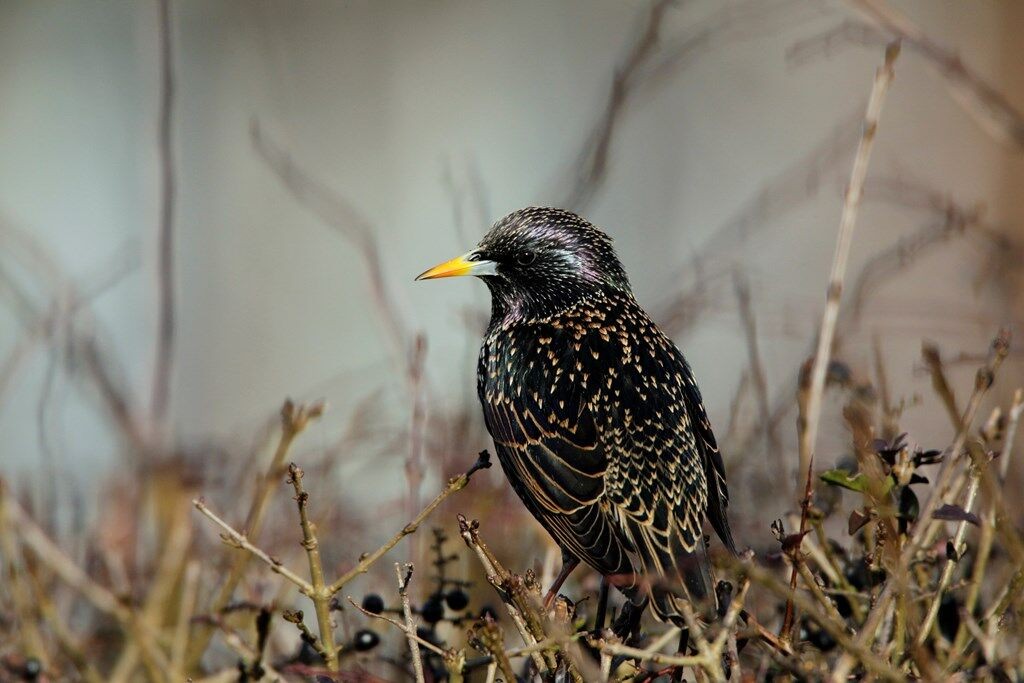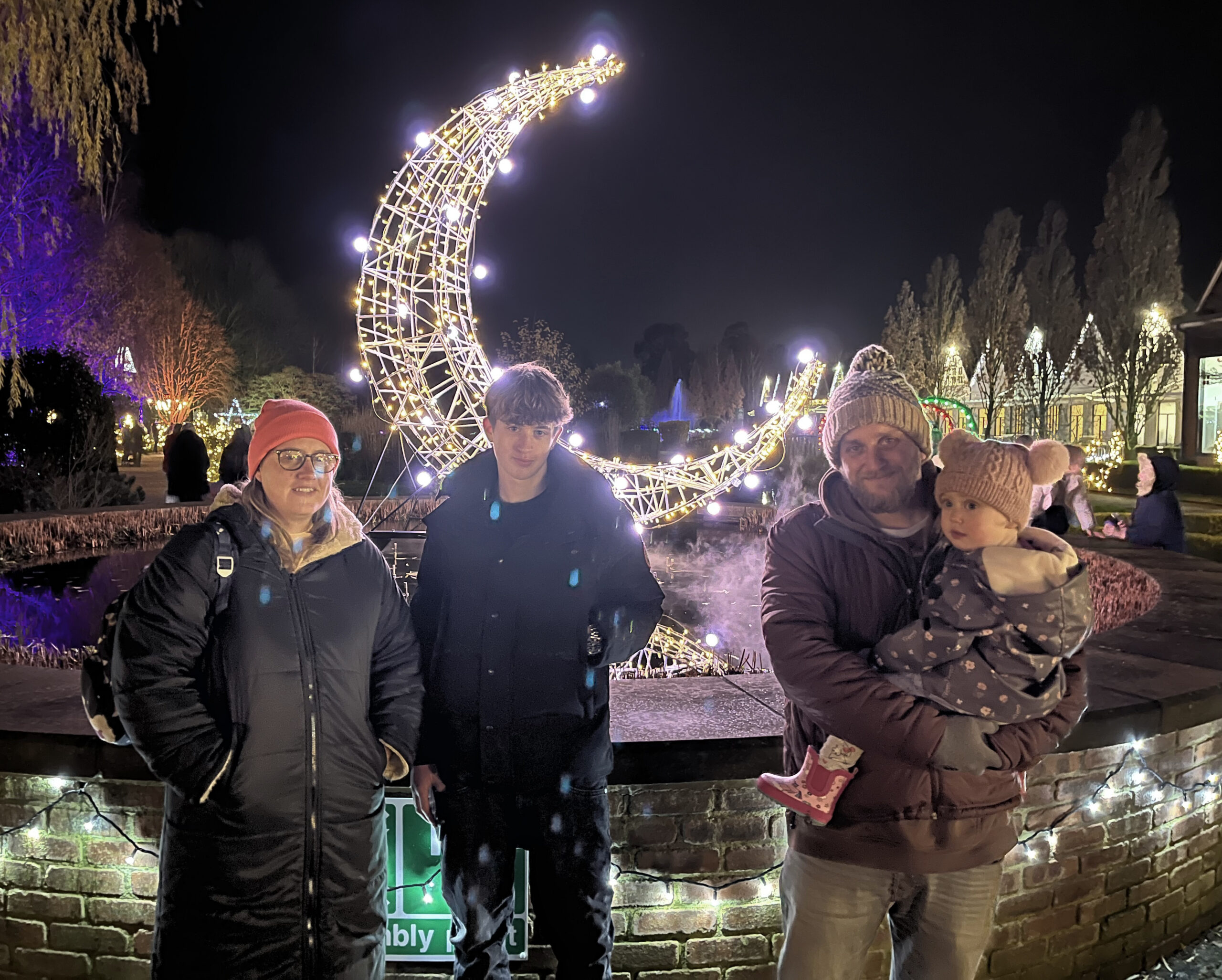Last time I wrote about a favourite garden visitor, the blackbird. This month I thought it’d be good to look at another familiar feathered friend, the starling.
Now, starlings aren’t always everyone’s favourite. Indeed, some people dismiss them as mere noisy black brutes. But do take a second look. For starters, they aren’t black. Their feathers are a deep, glossy mix of purple and black, covered with yellow “stars”. Quite attractive, if they get the sun on them.
Now, many birds use how beautifully they can sing to attract a mate, or how loudly. With starlings, it is a little bit different. The more variation in the song, the more impressive it is to the ladies. A standard starling song is a jumble of whistles and chattering. How to make this better? Well, they listen to other birds and copy them! They are very good mimics, and quite able to imitate blackbirds, robins or indeed any other sound they hear. In today’s urban environment, you can hear them doing doorbells, car alarms and phone ringtones.
Whilst starlings are still very common, in recent times there has been an alarming decline in their numbers. A drop of two thirds, over the last 30 years. This is quite worrying, for such a common and normally adaptable bird to be declining so quickly. And something that RSPB scientists are looking into. You can help by doing the Big Garden Birdwatch and letting us know how many starlings you see. Details can be found at www.rspb.org.uk/birdwatch.
Why should you care? Well, aside from the loss of any species, starlings do have an extra special habit. In the winter months, they gather at dusk before roosting in large flocks in reedbeds, trees or abandoned buildings. These flocks are a spectacular sight as they writhe and twist, like smoke blowing in the wind. An aerial ballet of birds, with not a single collision. It is one of nature’s true spectacles. Let’s hope we keep it in years to come.
by Dr Chris Andrews,
Visitor Experience Manager, RSPB Frampton







